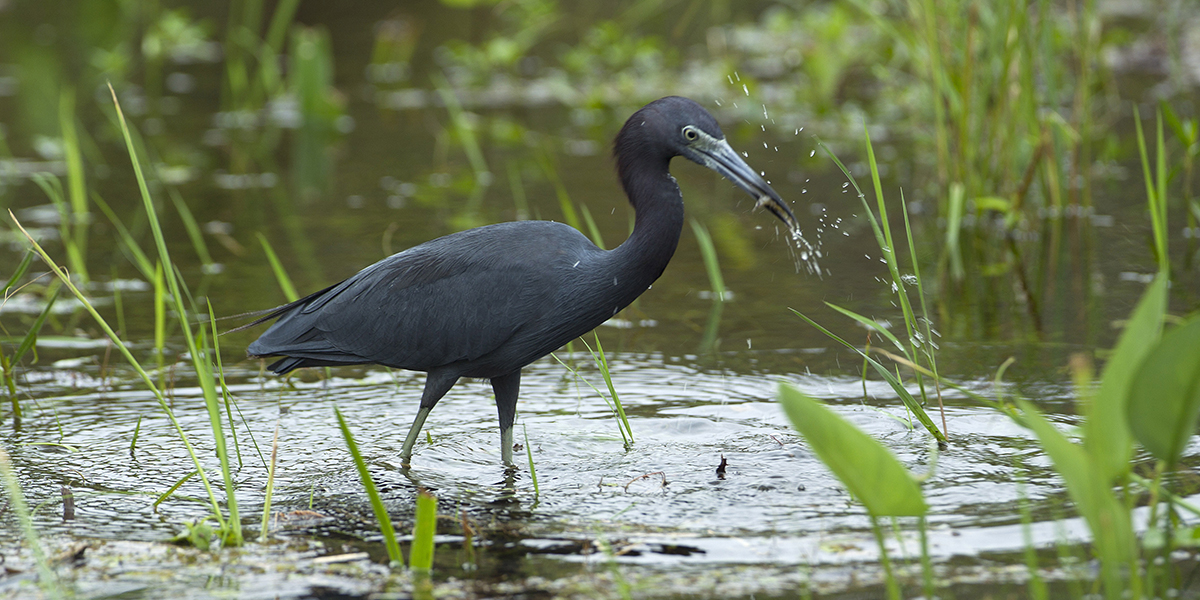From Mountains To Everglades, National Parks House History

A small blue heron shakes its head after capturing a fish in the waters of the Florida Everglades National Park Sunday, Oct. 30, 2011. (AP Photo/J Pat Carter)
J Pat Carter / Associated Press
“City Lights” travel contributor Kevin Benefield wraps up his tour of national parks of the South this week by highlighting the Everglades and Great Smoky Mountains.
Benefield describes the Florida Everglades as “expansive, ecologically unique and utterly wild.” With plenty of animal life to see, bird watching is the activity of choice for many visitors. The park has over 360 species of birds and features designated birding spots.
Benefield also recommends a visit to Shark Valley in the northern portion of the park. The valley has walking and biking trails, tram tours and a 65-foot observation tower at the highest point in the park.
And for history buffs, Everglades still houses a piece of the Cold War. Built in response to the Cuban Missile Crisis, the park includes an abandoned 1964 Nike Hercules Missile site, tours of which are available from December to April.
The Great Smoky Mountains National Park is “a vast natural playground, filled with opportunities to fish, hunt, hike, paddle and camp,” according to Benefield, from Klingman’s Dome sitting 6643 feet above sea level to more than 40 waterfalls.
For those who like to rough it in style, Benefield suggests visiting the LeConte Lodge, sitting near the peak of Tennessee’s Mount LeConte. Access to the lodge, which is older than the park itself, is via the seven-mile Bullhead Trail.
In addition to natural wonders, the park maintains more than 90 historic Appalachian structures, including houses, barns, schools and churches, with the largest concentration in Cades Cove, settled by Europeans in the early 19th century.
Finally, Benefield recommends a trip to the town of Cherokee to see “Unto These Hills,” an outdoor theater production which tells the story of the Cherokee Nation. Benefield says that, while the costumes, music and sets “bring their history to life … it’s the theater itself, set beneath the stars on the side of a mountain that makes the experience unforgettable.”
9(MDAxODM0MDY4MDEyMTY4NDA3MzI3YjkzMw004))





